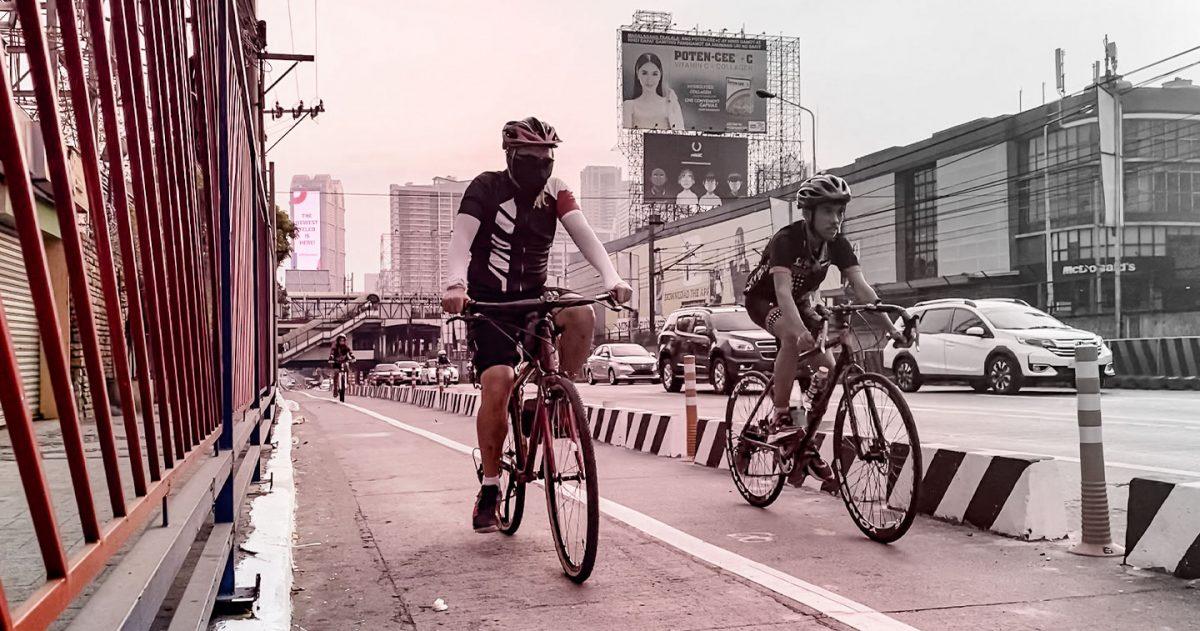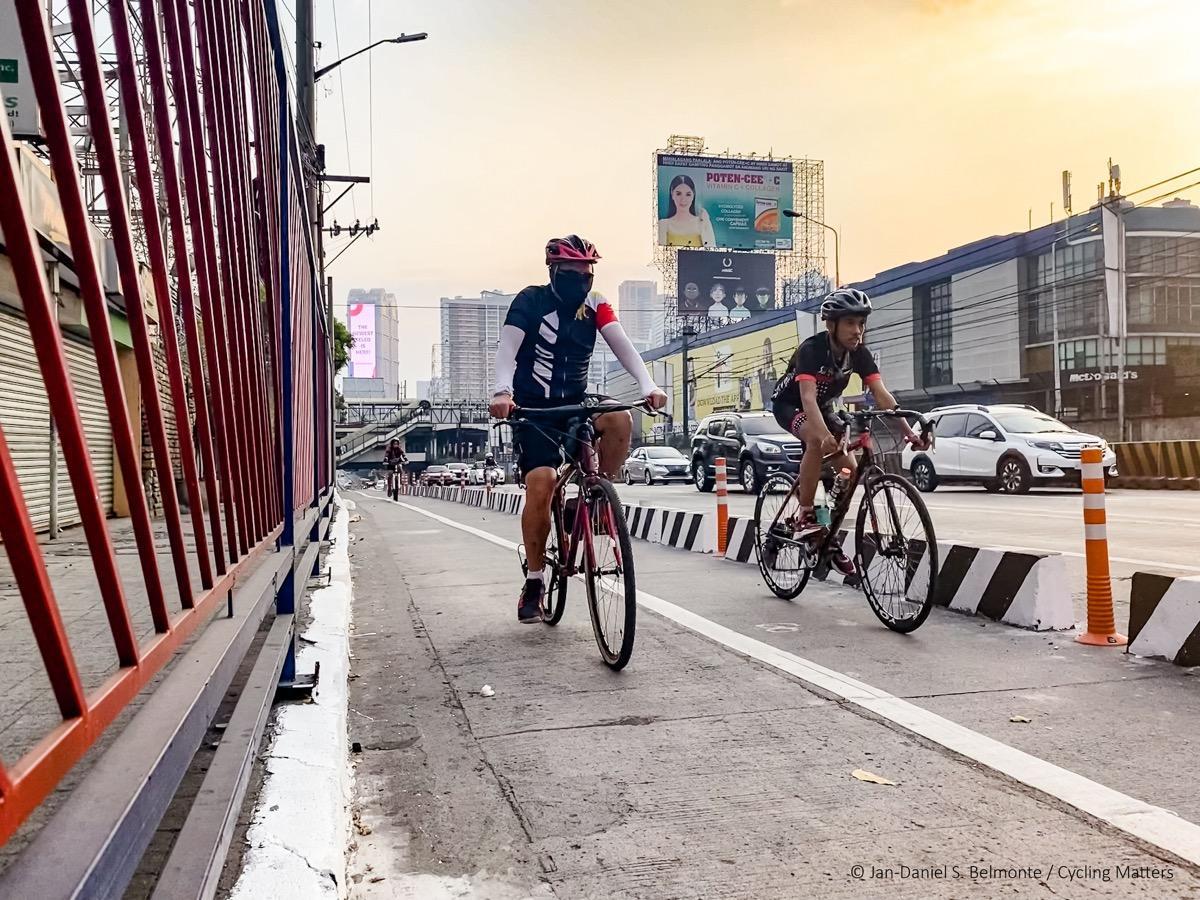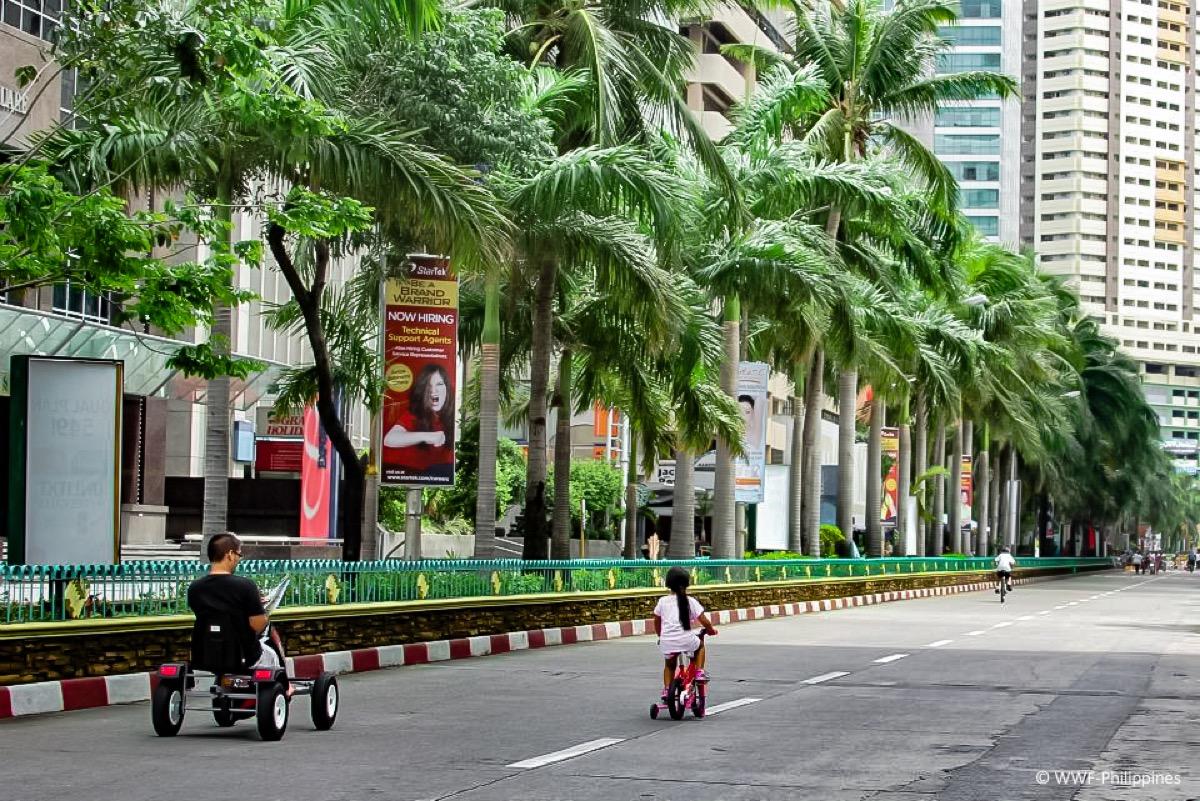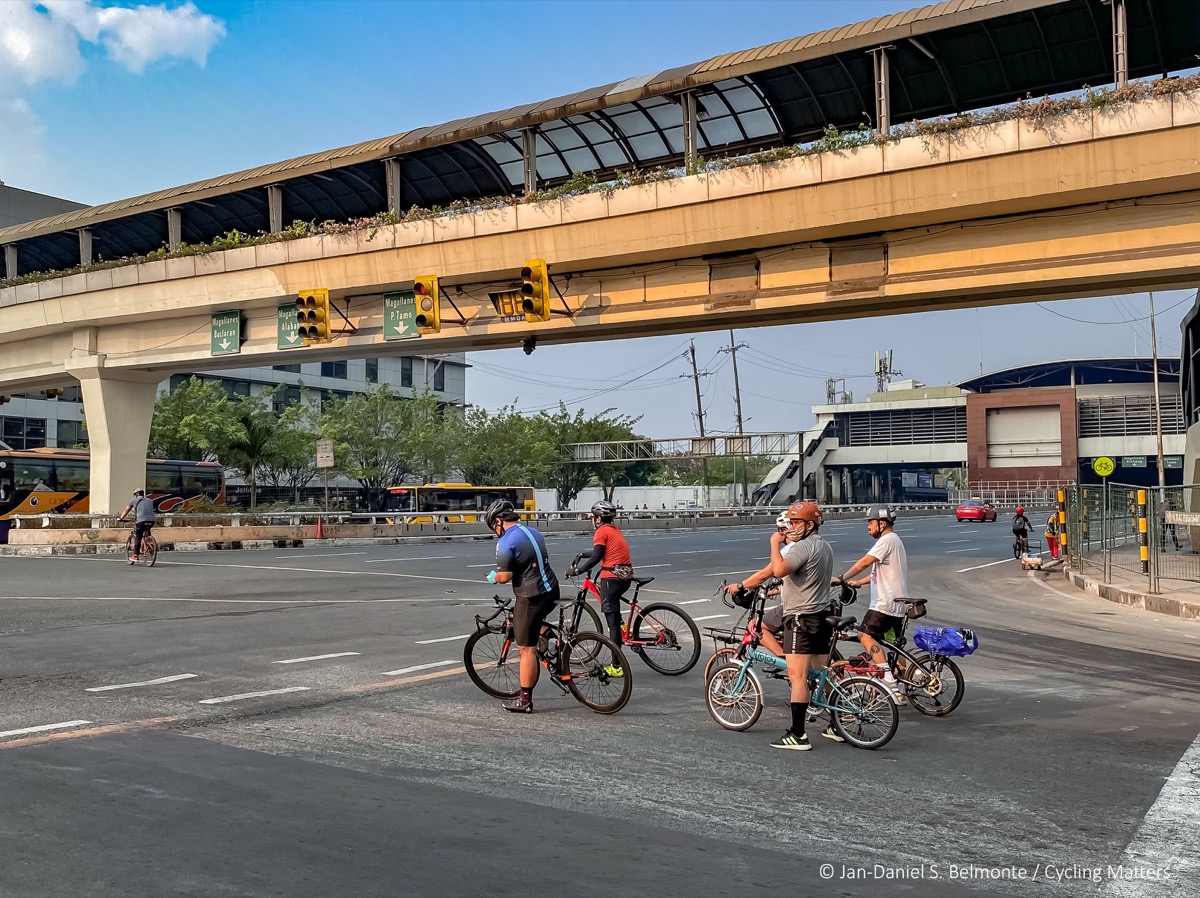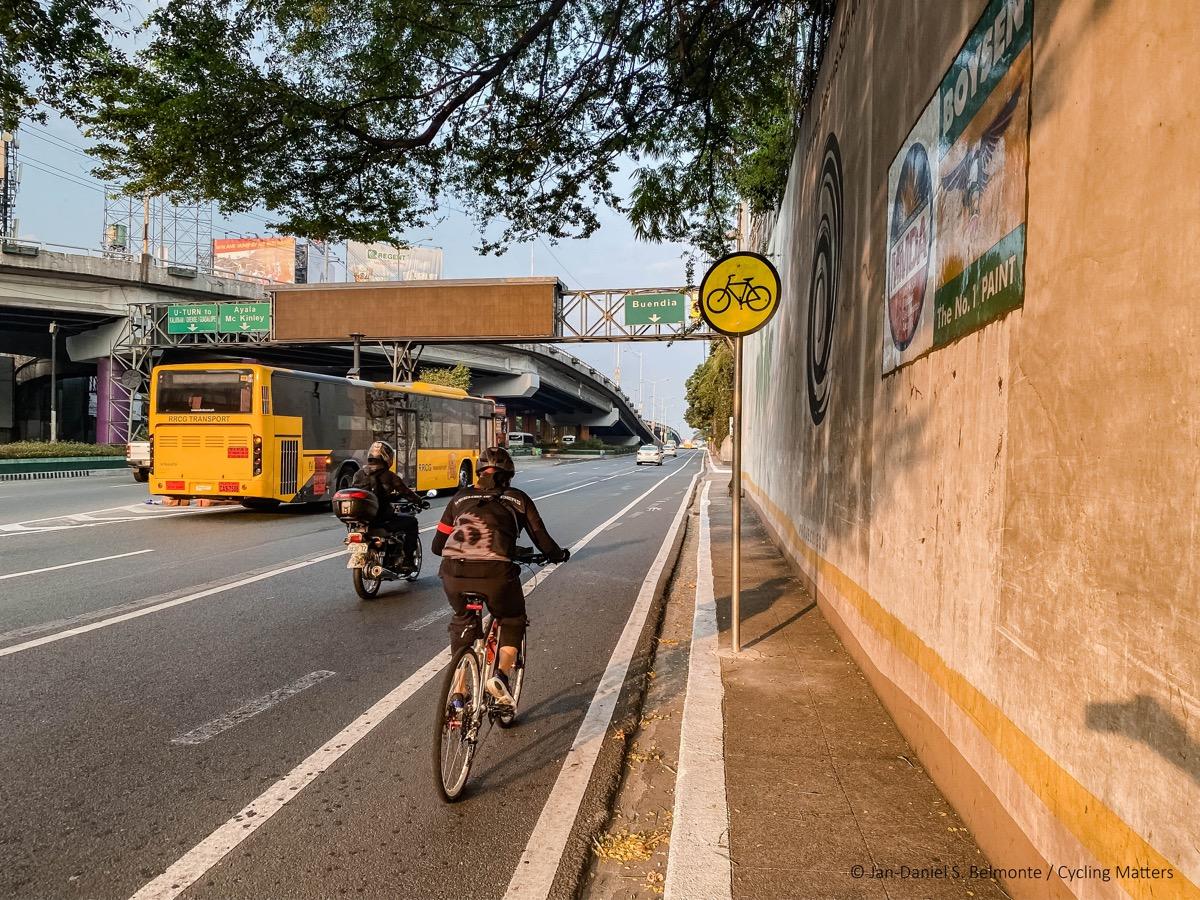MANILA, PHILIPPINES — For Jan-Daniel Belmonte, his commute before the pandemic was a half-hour struggle on his bicycle, unprotected from the roar of passing cars. Opting to bike in lieu of expensive fares and hours-long traffic jams, he found himself exposed to potential dangers posed by Metro Manila traffic to everyday pedestrians. When the pandemic happened and public transportation options became limited, bike lanes began to bloom across the Metro – but not without a push from the public. Jan found his ride to be significantly more tolerable than it was before.
“It’s actually very surprising,” shares Jan. “I honestly never thought I’d see protected bike lanes in my lifetime. It’s a good start, but it’s still far from what the people deserve.”
Jan is not alone. The past few months have seen an unmistakable boom in the number of cyclists on our roads and a flourishing of bike infrastructure. Pandemic restrictions made mobility difficult for millions of Filipinos living in cities across the country. Carless and out of options for getting around, many took to the streets atop bikes, pedaling to their workplaces or on regular errand runs. In time, bike lanes began sprouting across the Metro as many resorted to biking to continue with their daily lives.
The United Nations estimates that approximately 55% of the world’s population lives in cities [1]. According to UN Habitat, cities are responsible for 60% of greenhouse gas emissions [2]. Cities are a crucial focus point in the fight against climate change.
The inefficiency of our transportation systems contributes to our carbon footprint. In the Philippines, only 12% of people own a private car [3], with private cars emitting an average of 4.6 million metric tons of carbon dioxide annually. Despite this, most of our infrastructure is built for private vehicles. Millions of Filipinos are in dire need of systems that help them get around. Many of these solutions come with a much smaller carbon footprint.
For example, the Marikina Bikeways Program uses city funding to connect homes with workplaces and recreational areas in an effort to help local biking culture flourish. Similar biking infrastructure in San Juan and Quezon City, and along the length of EDSA have emerged to meet growing pandemic needs, while Pasig City has explored bike accessibility through a loan program aimed at government workers. Plans for a citywide Bus Rapid Transport system are set for completion in Cebu City by 2023, while Iloilo City turned plans for road construction into the River Esplanade, in an effort to create spaces for the public while promoting a culture of walking and biking [4].
There is a bloom of support for sustainable transportation and mobility. We must carry down this path if we want a climate-secure future.
These efforts have provided avenues for Filipino bikers to get around their cities safely, and with a minimized carbon footprint. They are a testament to how Filipino cities can be transformed to cater to the needs of the public while keeping climate change under consideration. The bike lanes that have emerged throughout the pandemic are the latest manifestation of the transformation of our cities.
Despite the progress, however, there are still many gaps that need to be addressed. Bikers like Jan, while thankful for the progress that has been made, find the current lanes too small to adequately meet the needs of the public. Many are disconnected and unintuitively designed, forcing bikes to break the policies designed for them, while some lanes still lack adequate protection. Other forms of sustainable transport such as mass transit systems are still plagued with efficiency problems, while informal modes of transportation like the countries’ jeepneys still lack the social support they need.
The needs of the people must be at the center of our transportation plans if we want our cities to be transformed for the betterment of everyone.
Having a Sustainable Urban Mobility Plan – an SUMP – could help local governments meet the transportation needs of their people while improving quality of life. Directing funds toward the construction of public transportation infrastructure would make our cities more accessible while lowering their carbon footprints. Taking empty lots and underutilized roads and turning them into parkways and pedestrian pathways can help bring greenery and a healthy public life back into our cities.
Bikers like Jan also see the need for the people to support the infrastructure that’s being set up. We need to push hard for better bike lanes and other innovative solutions that help people get around. The public needs to lobby, organize and vote with their feet by choosing to use the bike lanes, walkways and mass transit systems that end up being developed. With the ideas of professionals and the people’s vote, sustainable mobility alternatives can become the norm, and our cities can become more livable.
Cities that are leading the way towards sustainability should be recognized and encouraged.The One Planet City Challenge (OPCC), an initiative that we at the World Wide Fund for Nature (WWF) are spearheading, looks at the measures cities across the globe have adopted in order to combat climate change. On a biennial basis, the OPCC takes a look at what local cities have done to make their cities more livable – and their transportation systems more sustainable and accessible to all.
Much still needs to be done to convince our leaders that sustainable mobility is worth pursuing. Bike lanes alone still face many already-debunked arguments. If we want a fair future for everyone, we must decarbonize our cities and make them friendlier for those who walk and bike through them. This World Bike Day is a celebration of how far we’ve come, and a reminder that we must go even further, to protect our shared futures.
______________________________________________________________________
[1] The United Nations – Department of Economic and Social Affairs: 68% of the world population is projected to live in urban areas by 2050, says UN. http://bit.ly/UNurbanization
[2] The United Nations – Climate Action: Cities and Pollution http://bit.ly/UNCitiesPollution
[3] Japan International Cooperation Agency (JICA) and Department of Transportaton and Communications (DOTC): The Project for Capacity Development on Transportation Planning and Database Management in the Republic of the Philippines http://bit.ly/MUCEP
[4] Sustainable Urban Mobility: A Case Study of Philippine Cities’ Initiatives bit.ly/SustainableMobilityOPCC

